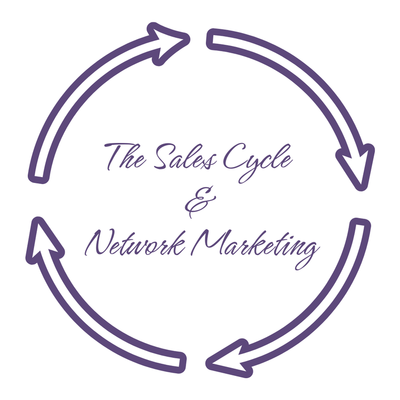
In the digital age, where consumers are bombarded with countless messages daily, standing out in the crowded marketplace requires more than just offering a quality product or service. It demands connecting with your audience on a deeper level, a feat best achieved through the art of brand storytelling. "Brand Storytelling: Crafting Narratives that Resonate with Your Audience" delves into the strategic process of weaving compelling stories around a brand, transforming it from a mere provider of goods or services into a relatable entity with values, aspirations, and a personality that echoes that of its audience. This powerful marketing approach not only differentiates your brand but also fosters an emotional connection with your audience, leading to enhanced loyalty, engagement, and ultimately, conversions. At its core, brand storytelling is about sharing the essence of your brand through narratives that are authentic, engaging, and aligned with your audience's values and experiences.
The journey of crafting an effective brand story begins with understanding the foundational elements that make stories resonate. Every memorable story contains a relatable protagonist, a compelling conflict or challenge, and a satisfying resolution. For brands, the protagonist is not just the company or its products but also the customers and the community it serves. The conflict often revolves around a common problem or need that the audience faces, with the brand positioned as the guide or solution provider leading them to a resolution. This narrative framework not only outlines the brand's role in the customer's life but also highlights its values, mission, and the unique benefits it offers. By framing your brand story within this structure, you create a narrative that is not only memorable but also deeply personal and relevant to your audience, making your brand an integral part of their story.
Moreover, authenticity plays a crucial role in brand storytelling. In an era where consumers are increasingly skeptical of advertising and can easily sense insincerity, authentic stories that reflect the true nature and values of your brand are essential. This authenticity stems from a deep understanding of your brand's identity—its history, mission, values, and the people behind it—as well as a sincere commitment to serving your audience. It's about sharing not just your successes but also your struggles and the lessons learned along the way, presenting your brand in a way that is human, relatable, and trustworthy. Authentic storytelling invites your audience to see beyond the transactions and view your brand as a partner in their journey, engendering trust, respect, and loyalty.
To effectively communicate your brand story, it’s crucial to identify and utilize the right channels where your audience is most engaged. In today’s fragmented media landscape, this could range from traditional platforms like print and broadcast to digital avenues such as social media, blogs, podcasts, and email marketing. Each platform offers unique opportunities to present different facets of your brand story in a manner best suited to that medium’s strengths. For example, social media can be used for short, impactful narratives or behind-the-scenes glimpses, while blogs can delve into more detailed storytelling aspects, exploring the brand’s history, customer success stories, or the inspiration behind your products or services. The key is to maintain a consistent narrative across all channels while adapting the storytelling style to fit the medium, ensuring your brand story is accessible, engaging, and coherent wherever your audience encounters it.
Visual storytelling is another powerful tool in the brand narrative arsenal, often conveying emotions and concepts more effectively than words alone. The use of compelling imagery, videos, infographics, and even memes can enrich your storytelling, making it more memorable and shareable. Visuals have the power to evoke emotions, create atmosphere, and illustrate points vividly, providing an immediate, immersive experience of your brand story. For instance, a video documentary showcasing the creation process of your product, from concept to completion, or photo essays featuring real customers with your products can create a deeper emotional connection and enhance the authenticity of your brand narrative. In leveraging visual storytelling, remember that consistency in style and tone is vital in reinforcing brand identity and ensuring that all visual elements contribute cohesively to your overarching narrative.
Interactivity and user participation bring a dynamic dimension to brand storytelling, making your audience not just consumers of your narrative but active participants. Encouraging your audience to share their own stories and experiences related to your brand can foster a sense of community and co-creation. For instance, inviting customers to submit their own testimonials or stories of how your product or service has impacted their lives, and then featuring these narratives in your marketing materials, can validate your brand’s value in a genuine way. Social media campaigns that invite user-generated content, contests that revolve around storytelling, or interactive web experiences that allow customers to explore your brand’s history or mission are all effective ways to engage your audience actively. This approach not only diversifies the voices in your brand narrative but also deepens the relationship between your brand and its audience by valuing and amplifying their voices.
Measuring the impact of your brand storytelling efforts is essential for understanding how your narratives resonate with your audience and contribute to your business goals. Utilize analytics tools to monitor engagement metrics, such as views, shares, comments, and the time spent on your content. Pay close attention to the stories that generate the most interaction and feedback, as these insights can guide the refinement of your storytelling strategy. Additionally, consider the qualitative feedback from your audience, including direct comments, reviews, and social media discussions, as these can offer deeper insights into the emotional impact and relevance of your stories. This ongoing evaluation not only helps in fine-tuning your narrative approach but also in reinforcing the elements that truly connect with your audience, ensuring your brand storytelling remains dynamic and effective.
In the journey of brand storytelling, it’s crucial to remain flexible and responsive to the evolving landscape of your industry and the changing needs and preferences of your audience. As your brand grows and adapts, so too should the stories you tell. Continually seek out new stories from within your organization, your customer base, and even broader industry trends to keep your narrative fresh and engaging. Embrace changes, celebrate milestones, and share challenges and solutions, as these all contribute to a rich, multifaceted brand narrative that captivates and retains your audience’s attention. Remember, effective brand storytelling is a continuous process that requires creativity, authenticity, and strategic thinking to evolve successfully over time.
Ultimately, brand storytelling is more than a marketing tactic; it's a fundamental aspect of building a lasting relationship with your audience. Crafting narratives that resonate, employing the right mix of content and channels, engaging your audience in meaningful ways, and continuously measuring and adapting your approach are all key to successful brand storytelling. By viewing your brand through the lens of stories, you not only communicate what you do but also who you are and why it matters, creating a deep emotional connection that transcends products or services. In the fast-paced world of business, where attention is fleeting and competition is fierce, a well-told brand story can be your most powerful asset, distinguishing your brand in the marketplace and fostering a loyal community of customers and advocates.
.png)




